
2A. Mouldlings
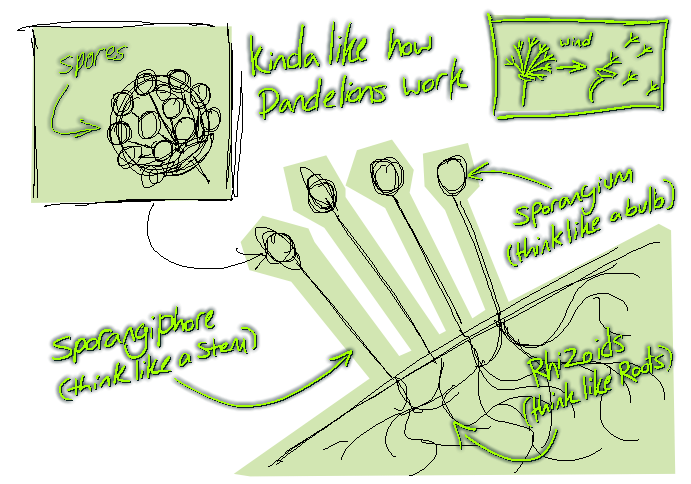
Mould (also sometimes spelt as mold) is the fungus type most commonly seen
within the household. Due to it's growth habits, colonies can usually be found in
humid environments with low airflow. In addition to this houses make a great place
for mould to grow with use of porous materials such as wood, drywall or insulation,
allowing the mould to take root alot easier. This can be damaging not only to the
home itself but of course the people inhabiting it. Mould growth involves spores
present as a clump on the ends of the growth labeled as a 'sporangium' which are
picked up and carried by the air current, very similar to the spread of dandelions.
Once reaching a point of rest, the spores will root and the colony will grow.
Unfortunately with these spores now being in the air, they can lead to allegic reactions
and other respiratory problems if inhilation becomes common place. While it does range
in potency, some (not all) moulds can often emit mycotoxins into the air as well as spores,
these mycotoxins are also produced when mould growth occurs in food product where the
product is then broken down into rot. Depending upon the species of mould, these food specific
mycotoxins can be harmful or beneficial to us. With the most popular example being penicillin,
which is taken from the product of the mould penicillium!
While it definitely isn't advised to keep mould growth in your house,
in fact it's best to get rid of it as soon as it arises to prevent health issues later on,
Mould is still an incredibly important part of the world's ecosystem, with it being found almost
everywhere on Earth. Mould, much like other fungi, is responsible for alot of the decay and
biodegration of natural waste and without it we would lose alot of valuable nutrients needed
for healthy soil, meaning that without it nothing would be able to grow and nothing
would decay after it dies.
So dont get mad when your food spoils and turns mouldy, thats just the mould doing its job :]
(you should definitely throw it out though)
Mould in Fungaloids
Mould is the most common type of fungus present in Fungaloids, often being the main base for
the body and giving most that fuzzy look to them. Mould can be shown through a Fungaloid's design
by an abundance of fuzz and whisker like pins present throughout the body.
Due to the nature of Mould growth, patterning on mould based Fungaloids
can appear splotchy and shifts occasionally with time.
(basically an excuse for not having to draw the same exact pattern each time :])
There are over 100,000 known species of mould and an estimated
1.5 million undiscovered species in different shapes and sizes,
but a few specific typings are:
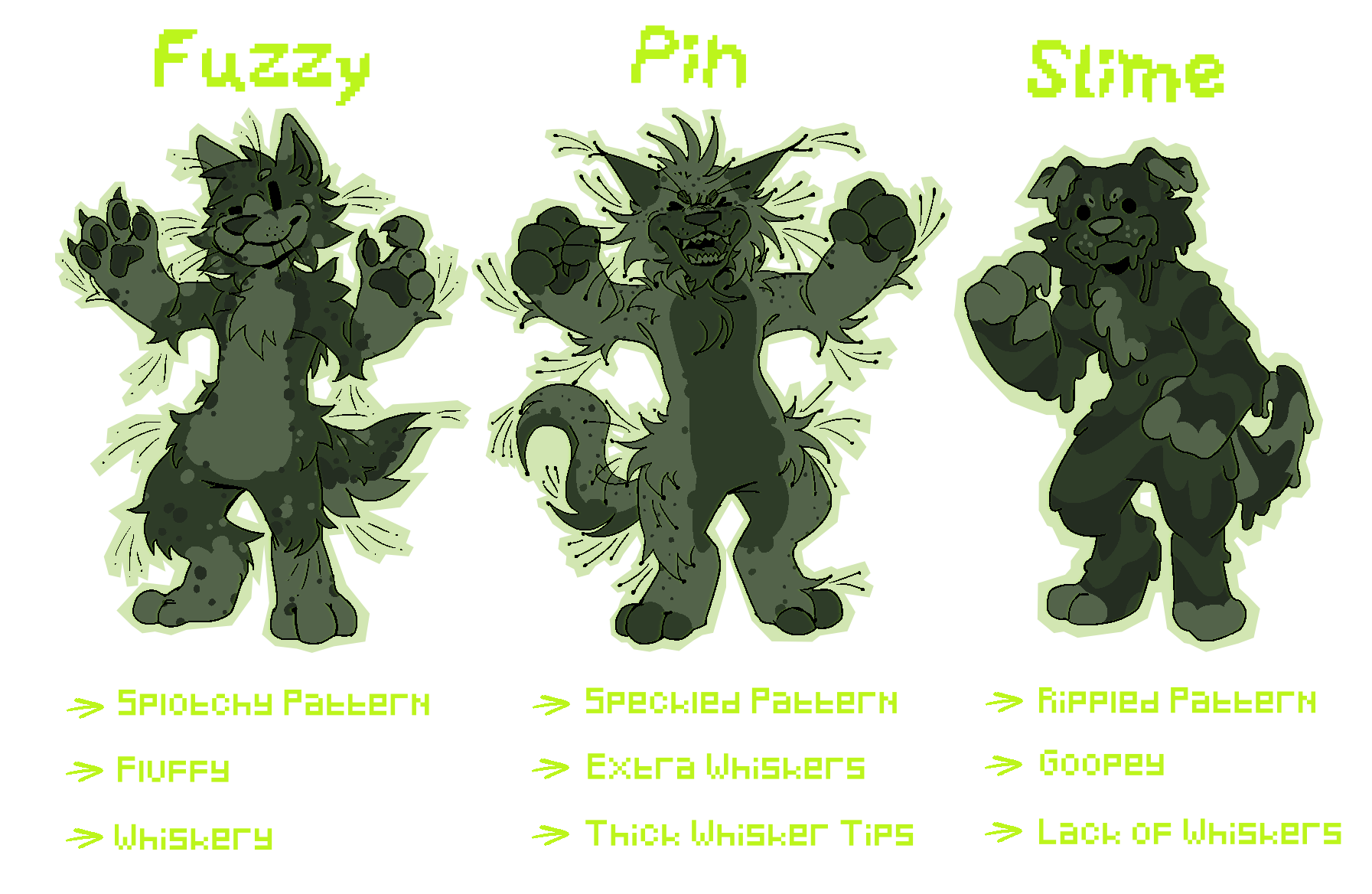
2Aa. Fuzzy Mould
Fuzzy mould is usually what comes to mind when you think of mould.
The thin hair-like structures found in mould growth is what gives it that fluffy look!
For Fungaloids this gives them a fluffier characteristic than most and an addittion of
lots of whiskers present throughout the body, more so in the fluffier spots such as
the face, specifically spots like the snout, cheeks and eyebrows, elbows, shoulders,
chest fluff, the tail and other joints.
There patterns are primarily splotchy as mould growth allows different species to grow
by overlapping one another, making it like a little battlefield on the fur pattern, with it
constantly changing and shifting slightly, however key patterns on the body will remain.
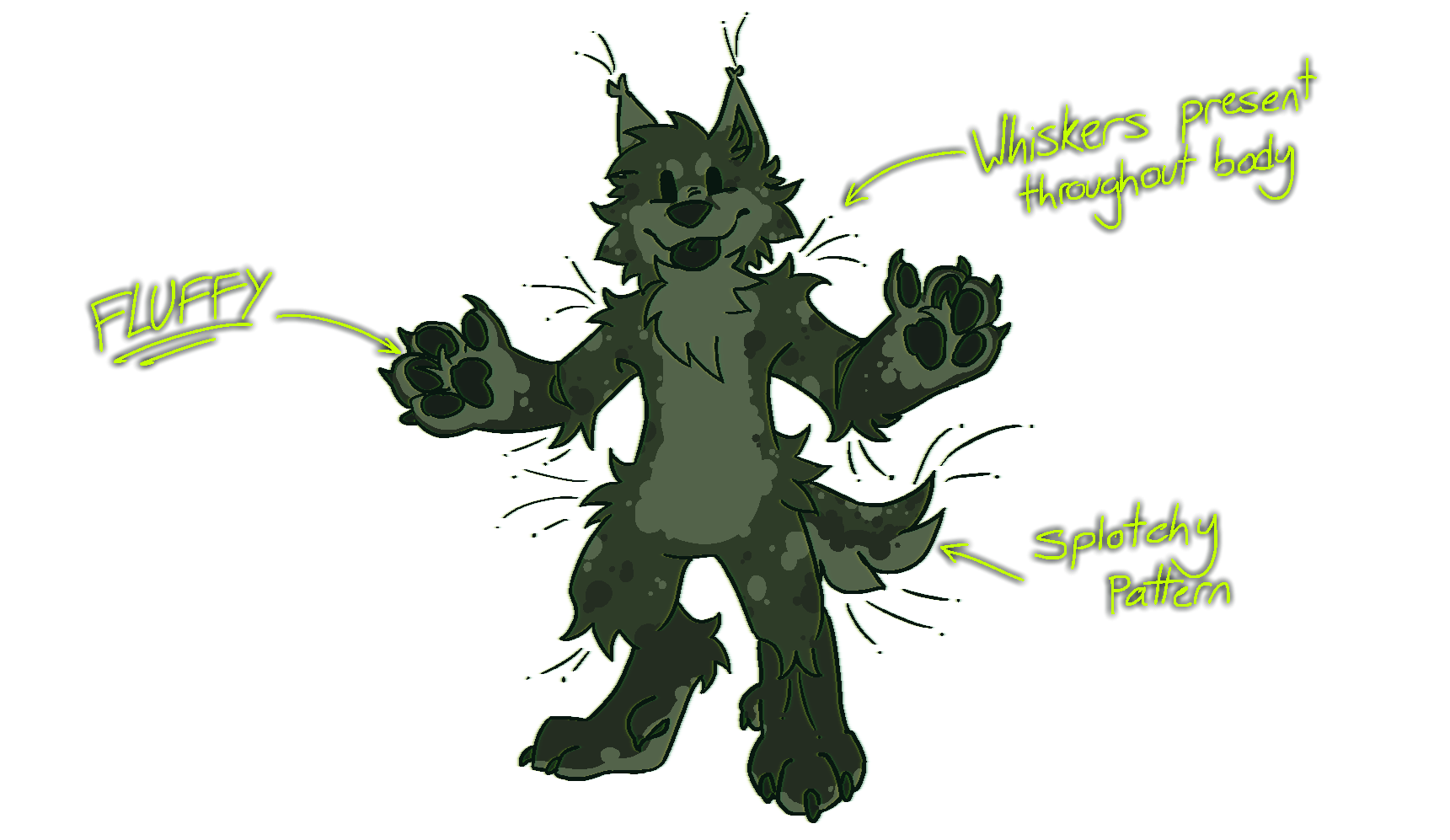
Examples of fuzzy mould are:
Penicillium Stachybotrys chartarum Alternaria alternata2Ab. Pin Mould
Pin mould, also reffered to as Mucorales, based Fungaloids are usually alot
more whiskery than fluffy, having a speckled pattern to them. Pin mould species can
be identified by their longer, slightly thicker stems with a thicker sporagium at the end,
giving them that pin-like shape. Similarly to fuzzy mould, air flow is used to spread
these sporagiums which contain zygospores that react when 2 collide, allowing the
mould to grow.
What differenciates the Pin Mould Fungaloids from Fuzzy Mould Fungaloids
is the significant boost of whiskers, with them being present almost all over the body
in far larger quantities than that of a Fuzzy Mould Fungaloid.
Pin mould fur is often thinner looking and has similair pins on the ends of them, causing
Pin Mould Fungaloids to gain a more speckled effect, looking as if they are covered in freckles.
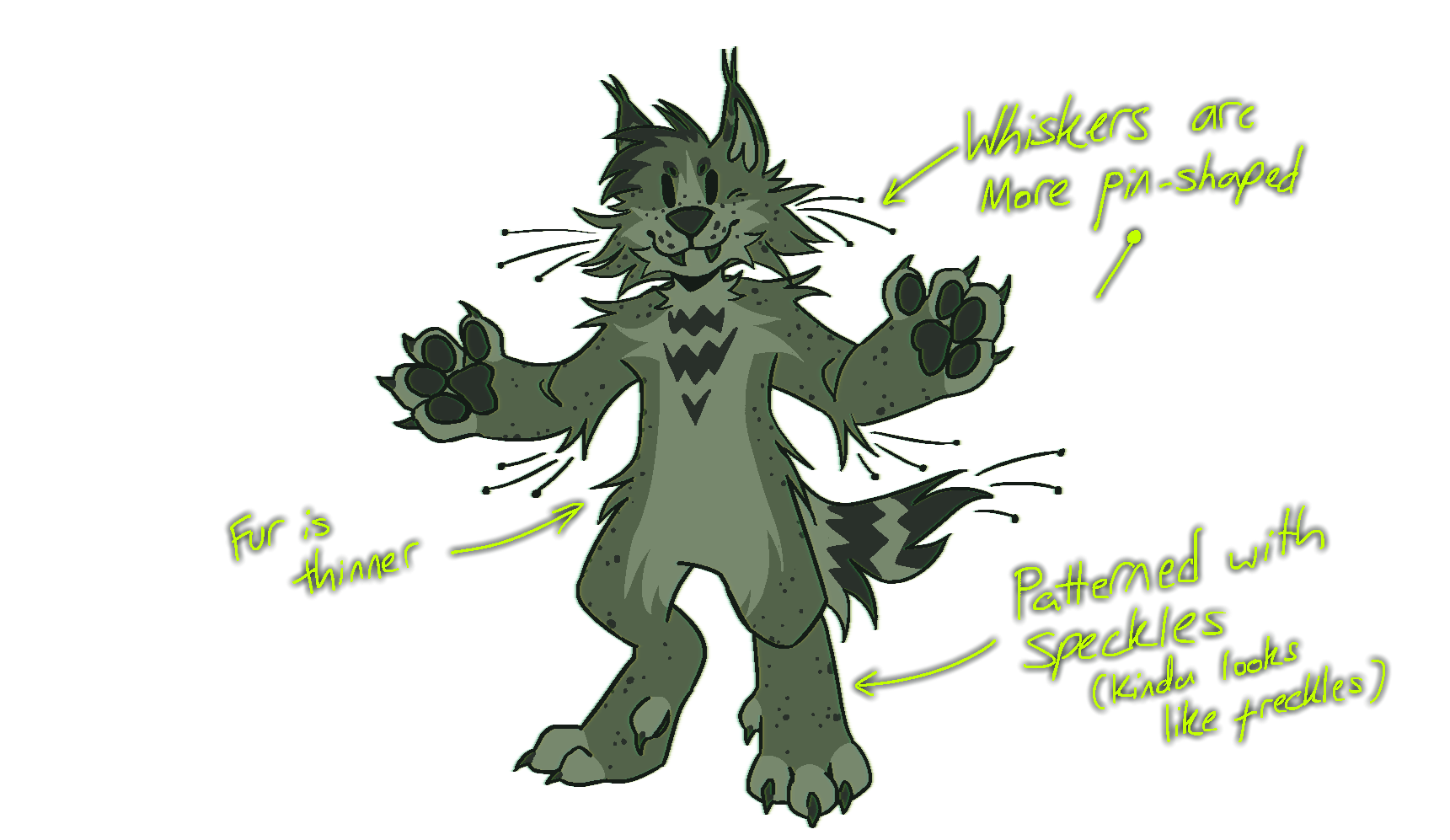
Examples of Pin mould are:
Cunninghamellaceae Pilobolaceae Radiomycetaceae2Ac. Slime Mould
Controversial inclusion here. Slime mould, while not actually being a mould,
will be included for the Fungaloid species. Not only because I think they look cool,
but also to shine light on this common naming misconception!!
Slime moulds are not defined as a mould, or even a fungus due to them actually being more
akin to an amoeba, slime moulds are in-fact made up of single celled organisms which form into
one huge cell and instead have a cellulose based cell wall structure and not a chitinous one.
They are also able to move around, which while looking cool
makes them unable to be classed as fungi.
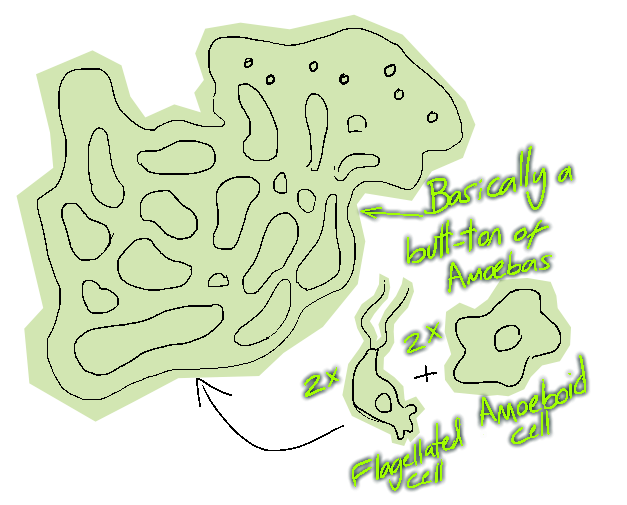
In Fungaloids, Slime moulds show through a ripply pattern similair to the dripping of the
slime itself. On top of this, Slime Mould Fungaloids do not possess whiskers as they would
most likely just keep sticking to the body.
Of course this can be avoided if the Fungaloid is only partially slime based
Out of all the mould base Fungaloids types, slime mould patterns shift the most frequently
and require alot more nutrients to sustain themselves.
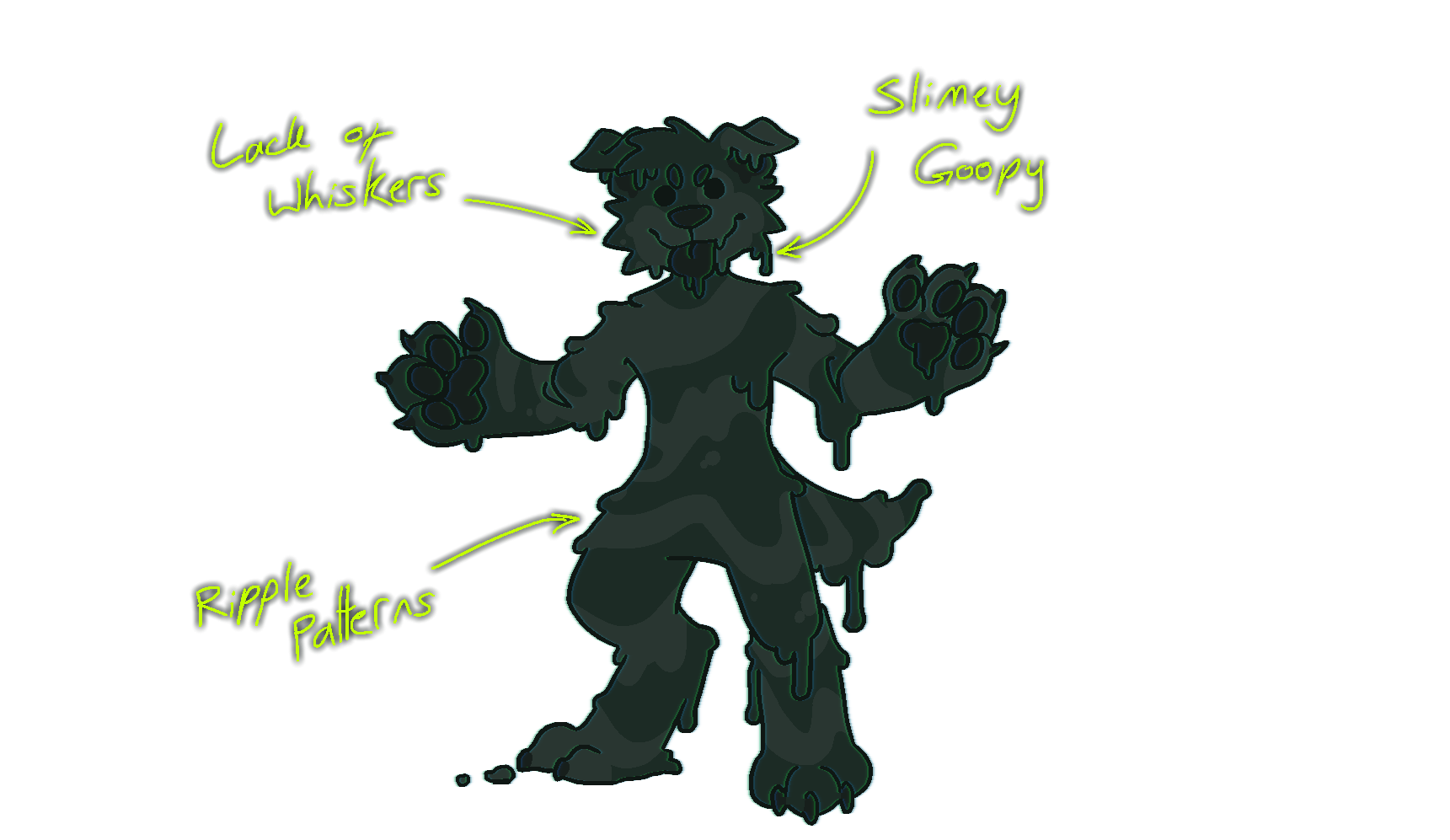
Examples of Slime mould are:
Fuligo septica Metatrichia Tubifera ferruginosa2Ad. Mildew
Mostly being put in here as a small note, Mildew has a pretty vague description to it.
In plant growth Mildew is usually used more as a description for any kind of white powdery
growth on plants. However in more urban/household environments it is infact not its own
seperate species of fungus and is instead a description used for various species of mould
itself/ an early growth stage for fungus, being described as a flat, light coloured,
powder-like growth. Unlike mould it is alot less dangerous and destructive, usually only
being a growth on top of the surface rather than the detructive rooting that occurs with
mould growth in materials found in the house mentioned before. So the inclusion here is
up to your own interpretation :]
If in were to be present within a Fungaloid it would be very similair to Yeast based
Fungaloids, being shown as a powder on top of some other material base.
See the adoptables page for more examples of fungaloids!
